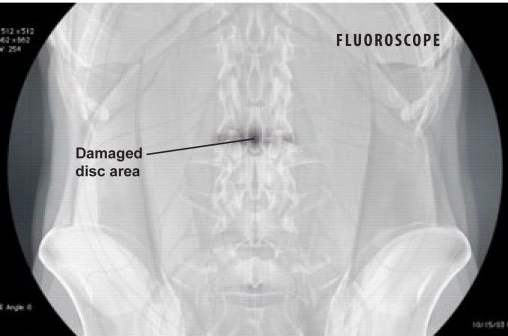That numbing tingling feeling that you have in your legs and lower back could be degenerative disc disease. Degenerative disc disease is caused by the naturally occurring wearing down of discs along the vertebrae. These discs allow you to move, bend and twist in different directions. As we age, the discs wear down, and even the slightest tears can cause chronic back pain.
The discs in a vertebra absorb shock from general and recurring movements. The discs are made up of mostly water and naturally dry out and breakdown as part of the aging process. When chronic back-pain results as other than natural aging, then degenerative disc disease is a common diagnosis. Degenerative disc disease frequently is seen in older adults aged 40-60 years. Younger athletic adults and professional athletes receive treatment for degenerative disc disease and over half of the population will require some form of treatment for this condition.
Treatments for disc pain are over-the-counter anti-inflammatories such as acetaminophen or ibuprofen, prescription medications, ice packs, or heating pads. Some topical analgesic ointments have also been used. When these options are ineffective, patients are evaluated for surgery. There is a wealth of information on the internet regarding symptoms, diagnosis, and treatment options. Every back-pain occurrence is not necessarily degenerative disc disease and not every diagnosis will require surgery.
Only a licensed medical professional can diagnose disc degeneration and will do so with the use of an MRI or X-rays. Here’s a list of five symptoms of chronic degenerative disc disease and if you are experiencing any one of them significantly, or multiples of these symptoms, then you should see a back-pain specialist immediately.
• Experiencing numbness or tingling in the back of your legs, upper thighs, or lower back is a common symptom of degenerative disc disease.
• Sharp radiating pain in the lower lumbar region is another reliable indicator.
• Sleeplessness and restlessness occur due to the inability to get comfortable.
• Neck pain that occurs at the base near the top of the spine that is intermittent or consistent can signal disc degeneration.
• Frequent muscle cramping in the hip, legs, and back or any pain that is not relieved with usual methods can be symptoms of degenerative disease.
For chronic back pain that will not go away with pain medications or other methods, there are treatment options such as Minimally Invasive Lumbar Microdecompression. Minimally Invasive Lumbar Microdecompression is a method of removing excessive vertebral bone and some soft tissues surrounding the affected area. The surgeon will use a scope to guide surgical instruments through a small incision in the back to free the nerve of the oppressing bone material. The surgeon will then guide the vertebra towards the opposite direction which will provide decompression and relief for the patient. This method of pain relief has had significant successes, and most patients are pain-free within a couple of weeks. The procedure only takes a few hours, and most patients are up and walking shortly afterward. Minimally Invasive Lumbar Microdecompression is a very encouraging method that returns back-pain sufferers to their normal lives.
Call 972-499-5457 to schedule a neck or back consultation with one of the best orthopedic spine surgeons, Dr Courtney.
Make an Appointment today!

